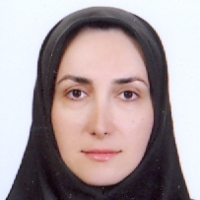Factors Affecting Mastitis, the Frequency of Pathogens and Estimation of Genetic Parameters
Mastitis refers to inflammation of the mammary gland and is a common and costly bacterial disease in the dairy industry that causes direct economic losses (reduced milk production, early culling of cattle from the herd and high costs of treatment) and indirect (reducing the quality of milk production). The disease is divided into two types of acute and subclinical, which the clinical type is associated with clear clinical symptoms. Infection can have different origins and can be caused by various pathogens such as E.coli, Staphylococcus aureus, Streptococcus agalactiae, Streptococcus uberis, Streptococcus dysgalactiae, Streptococcus obris and Klebsiella Pneumoniae.Management Improvement is not being alone able to control the disease of mastitis, because the environmental organisms causing the disease cannot be eliminated. As a fact, there are genetically different factors affecting on susceptibility to mastitis. Therefore, breeding in order to increase resistance to mastitis is a powerful tool to reduce the incidence of this disease. In most countries, this disease simply does not record like as the other health traits. On the other hand, there is an unpleasant correlation between milk production and the number of somatic cells count as an indirect indicator of mastitis.Due to the low heritability of mastitis, a direct selection is very difficult to reduce the disease, and most countries that have a genetic evaluation for mastitis resistance, generally use the number of milk somatic cell as an indirect indicator. Considering the positive correlation between mastitis and somatic cell count, in the genetic evaluation of mastitis, a somatic cell count is used. On the other hand, the heritability of somatic cell is more than mastitis, and it has been estimated from 0.04-0.16 in the first lactation by test day methodThe aim of this study was to investigate the factors affecting the incidence of mastitis, estimation of variance components and frequency of pathogens.
A total of 22722 records of Holstein cows’ mastitis in 6 herds in Khorasan Razavi province. Environmental effects of mastitis were analyzed by the logistic procedure of SAS software. These effects included of the herd, year and month of calving, lactation number, stage of lactation, the first and the second degree of regression coefficients of days in milk and SCC, respectively. Variance components of mastitis were estimated by considering effects of herd, year and month of calving, lactation number, milk production, Somatic cell count, days in milk and pedigree in a logistic model of ASREML software. Sixty milk samples were collected to culture the most frequent pathogens of mastitis.
Our study showed that 12% of cows showed mastitis at least once during their lactation, which was the most likely outbreak in 9-12 months of lactation; however, 5% of all cows had mastitis during the first 150 days of lactation in all lactation periods. Analysis of variance revealed that all factors of the model were significant (P<0.01). Mastitis was reduced by the 4th lactation number and increased then after. Mastitis rate showed a decreasing trend in February and during the studied years, which interpreted improvement in this trait. The heritability of mastitis, somatic cell score and their genetic and phenotypic correlations were estimated 0.037±0.0008, 0.055±0.008, 0.712±0.112 and 0.062±0.009, respectively. The microbial culture showed different patterns of pathogen-related mastitis during the stage of lactation. The highest cultured bacterial strains were Streptococcus aureus (20%) and Staphylococcus agalactiae (12%). The E. coli bacteria, which mainly cause environmental mastitis, accounted for 6% of all samples.it was found by the interval between calving and microbial culture time, the highest amount of E. coli was observed in the second half of lactation, while the streptococcus from the eighth month and staphylococcus from the fifth month to the end of the period was observed. Based on the classification of milk production per 10 kg, it was found that by increasing production, the risk of Streptococcus increased, but no change was observed for staphylococci. All E.coli contamination was observed in cows producing range between 30 and 40 kg, which may be due to the long openness of the nipples after being milked and entering the pathogens during the resting time of cattle.
This study revealed that there was a high genetic correlation between the somatic cell count and mastitis infection (0.71). Hence, there is a possibility to genetically improve dairy herds by selection of resistant cows with lower somatic cells. Therefore, it is strongly suggested that the industrial herds take into account the milk somatic cell records. On the other hand, The National Animal Breeding Center and Promotion of Animal Products, should report the breeding values of this trait every six-month. Since the information of mastitis outbreak is highly scattered and done by herds individually, it is suggested that a central database of this information be provided by National Animal Breeding Center and Promotion of Animal Products.
- حق عضویت دریافتی صرف حمایت از نشریات عضو و نگهداری، تکمیل و توسعه مگیران میشود.
- پرداخت حق اشتراک و دانلود مقالات اجازه بازنشر آن در سایر رسانههای چاپی و دیجیتال را به کاربر نمیدهد.



